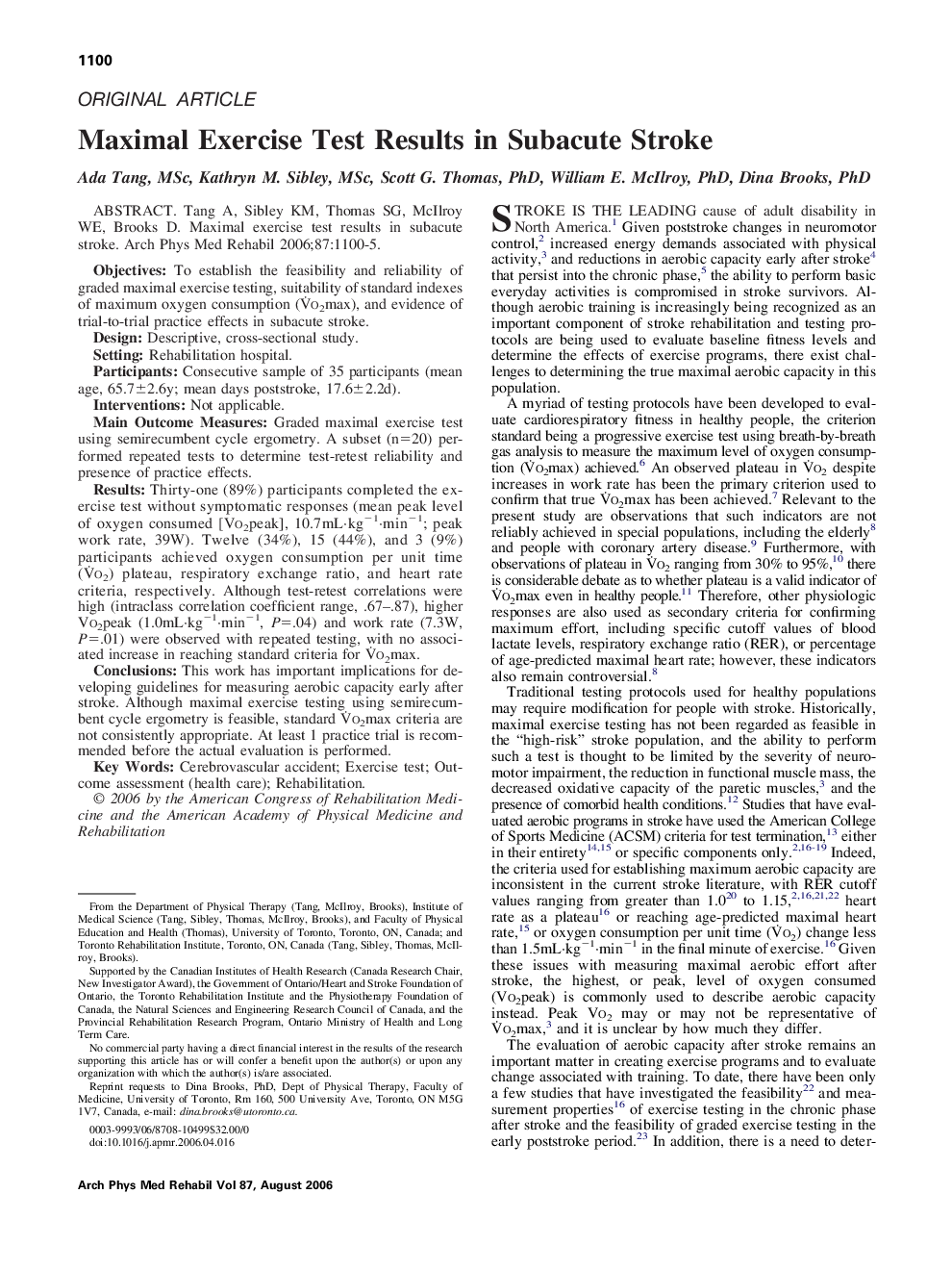| Article ID | Journal | Published Year | Pages | File Type |
|---|---|---|---|---|
| 3452552 | Archives of Physical Medicine and Rehabilitation | 2006 | 6 Pages |
Tang A, Sibley KM, Thomas SG, McIlroy WE, Brooks D. Maximal exercise test results in subacute stroke.ObjectivesTo establish the feasibility and reliability of graded maximal exercise testing, suitability of standard indexes of maximum oxygen consumption (V̇o2max), and evidence of trial-to-trial practice effects in subacute stroke.DesignDescriptive, cross-sectional study.SettingRehabilitation hospital.ParticipantsConsecutive sample of 35 participants (mean age, 65.7±2.6y; mean days poststroke, 17.6±2.2d).InterventionsNot applicable.Main Outcome MeasuresGraded maximal exercise test using semirecumbent cycle ergometry. A subset (n=20) performed repeated tests to determine test-retest reliability and presence of practice effects.ResultsThirty-one (89%) participants completed the exercise test without symptomatic responses (mean peak level of oxygen consumed [Vo2peak], 10.7mL·kg−1·min−1; peak work rate, 39W). Twelve (34%), 15 (44%), and 3 (9%) participants achieved oxygen consumption per unit time (V̇o2) plateau, respiratory exchange ratio, and heart rate criteria, respectively. Although test-retest correlations were high (intraclass correlation coefficient range, .67–.87), higher Vo2peak (1.0mL·kg−1·min−1, P=.04) and work rate (7.3W, P=.01) were observed with repeated testing, with no associated increase in reaching standard criteria for V̇o2max.ConclusionsThis work has important implications for developing guidelines for measuring aerobic capacity early after stroke. Although maximal exercise testing using semirecumbent cycle ergometry is feasible, standard V̇o2max criteria are not consistently appropriate. At least 1 practice trial is recommended before the actual evaluation is performed.
